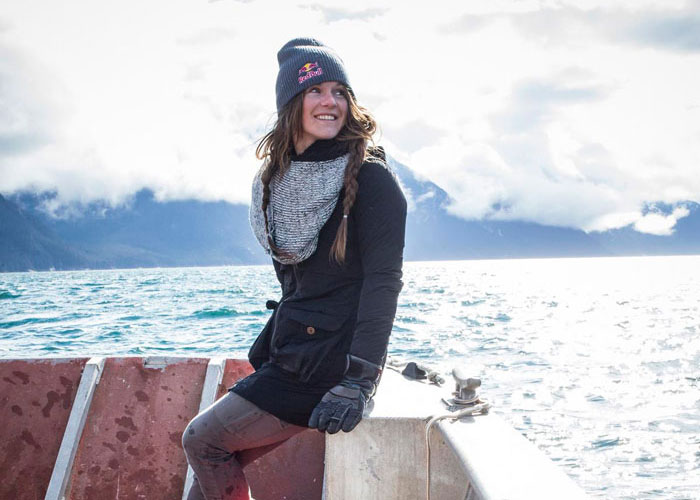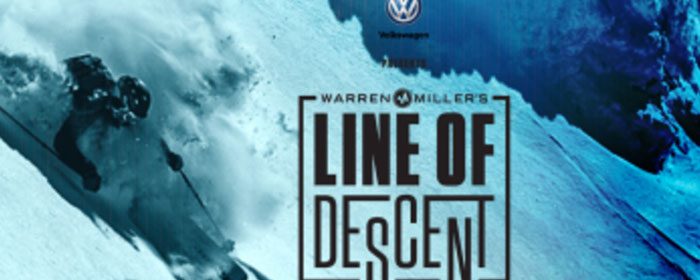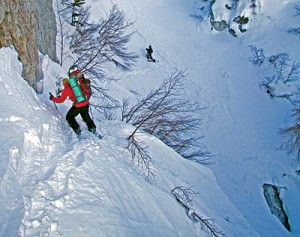- Dear EarthTalk: What’s the idea behind the recent launch of the American Climate Corps by the Biden administration? - 07/14/2024
- Earn Your Beer: Issue#133 - 07/08/2024
- Dear EarthTalk: How Is It That Banks Play a Disproportionately Large Role in the Increase in Greenhouse Gas Emissions, and What Can We Do to Reform This? - 07/07/2024
A beginner’s guide to the backcountry
By Rob Kyte
With all of the snow this year, you may be thinking of ditching the lift line for fresh powder and untracked terrain in the backcountry. Going past the boundaries of ski resorts opens up a whole new exciting world of possibilities for skiers and riders.
But, before you start skinning tracks, make sure you learn how to travel safely and responsibly in the backcountry.
Any terrain beyond the boundaries of the ski resort — whether you hike in, snowshoe, enter through the sidecountry, skin up the slopes, or drop in via helicopter — is considered the backcountry. Such terrain can be extremely varied, and it’s important to be thorough in your safety skills and education. Here are some steps to get you ready:
Take a backcountry 1.0 course
Before taking an avalanche safety course, start with a basic backcountry course. These courses get you ready for the nuance and fundamentals of backcountry travel and uphill movement. Learn how to properly use your touring gear under the supervision of a certified instructor. This is the ideal first step.
Take an avalanche safety course
Many avalanche centers around the country offer free courses that cover the basics. These are good, but do not replace the more thorough AIARE (American Institute for Avalanche Research and Education) courses provided by outfitters. These courses are taught by certified instructors who can help prepare you for anything from local tours to ski expeditions in the big mountains.
Be prepared with the right knowledge, gear, skills, and fitness
You must have the right equipment to safely travel in the backcountry. Essential safety gear includes an avalanche beacon, a shovel, and a probe; be confident in your ability to use this gear in a variety of conditions. Beyond the safety gear, anyone wishing to travel uphill will have to utilize skis with touring bindings and skins. If you’re a snowboarder, consider a splitboard. Make sure you are confident in your skills and fitness. Backcountry winter travel typically requires skinning for extended periods of time, and once at the top you must be comfortable with skiing/riding down off-piste terrain in variable conditions. It is not always as easy as it looks.
Thoroughly plan and review your first backcountry trip
Assemble your crew, check local weather and avalanche forecasts, and use the web, guidebooks, and maps to plan your first outing. Still unsure of your abilities to travel safely in the backcountry? If you doubt your skills, or even if you’re on the fence, it’s always best to hire a guide. This is the best way to get familar with winter backcountry travel.
NOTE: On big snow years, like the one we are having this winter, avalanches and other safety risks can happen inbounds at resorts. If you plan to push the boundaries on big days at your favorite resort, it is a good idea to wear a beacon and have some knowledge of high-risk conditions. Always ski/ride within your limits to keep you and your crew safe.
Main image: Anthony Cupaiuolo / First Tracks Prodcution
Read other backcountry articles here.













